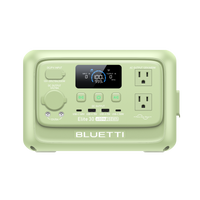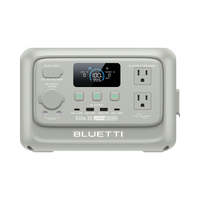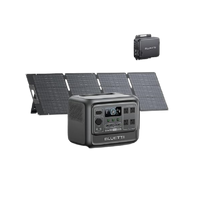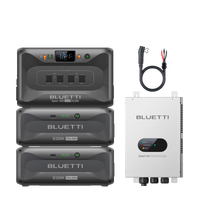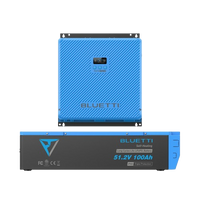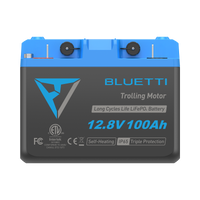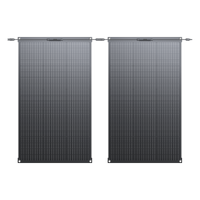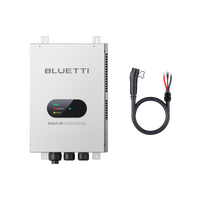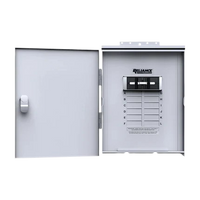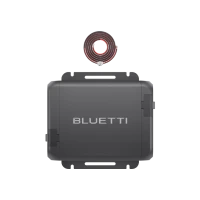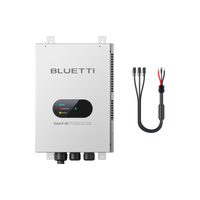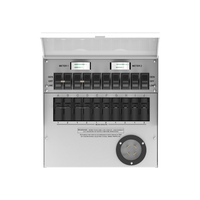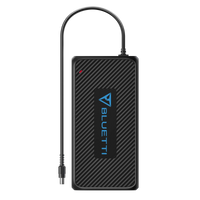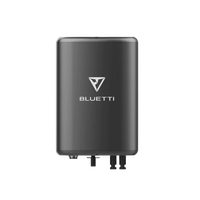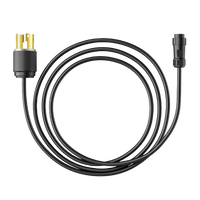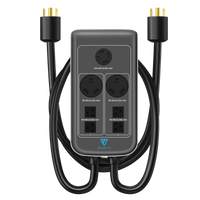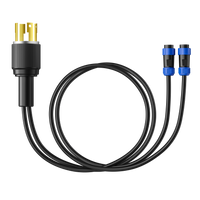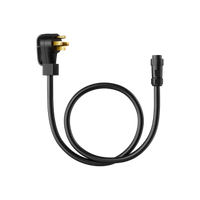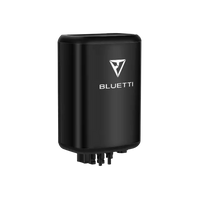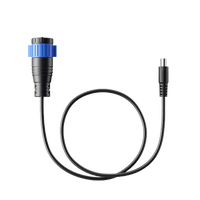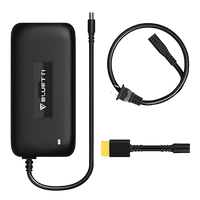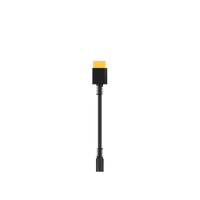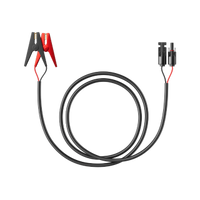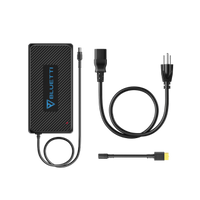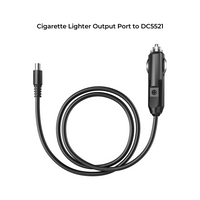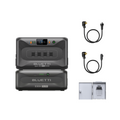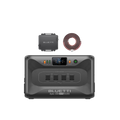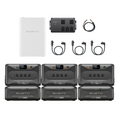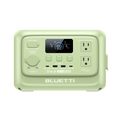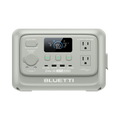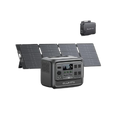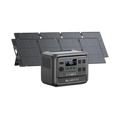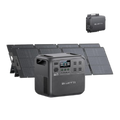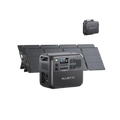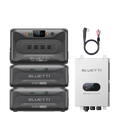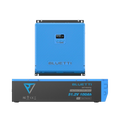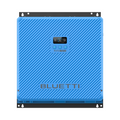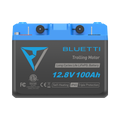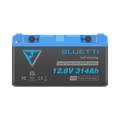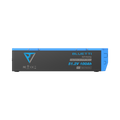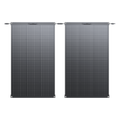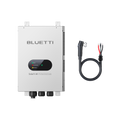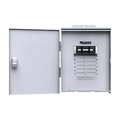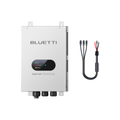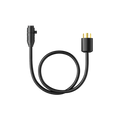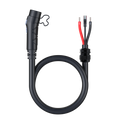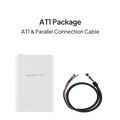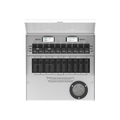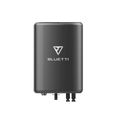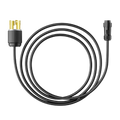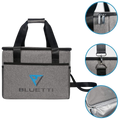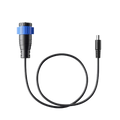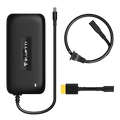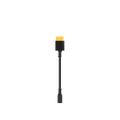Buying a solar generator for your home’s backup power is smart and prudent, considering the unpredictability and increasing frequency of power outages and blackouts. At the very least, your solar generator should meet your home’s electricity consumption rate. Moreover, it should offer other benefits, such as versatile features and durability.
Notably, different solar generator models vary in overall design and performance, so it is important to have a specific idea of what you want. Here is a comprehensive guide on choosing the best solar generator for home backup power.
How Does a Solar Generator Work?

Understanding how a solar generator works will help you know what to look for when shopping for one. The generator is a kit comprising four components that generate, store, and supply electricity. They include the following:
- Battery: A battery stores electricity generated by the solar panels to power your appliances and devices when the power goes out.
- Solar Panels: They capture energy from the sun and turn it into DC electricity to charge the battery.
- Charge Controller: It regulates the flow of electricity from the solar panels to the battery, preventing overcharging and hence optimizing the battery’s efficiency and durability.
- Inverter: It converts the DC electricity stored in the battery to AC electricity, which is compatible with most electric devices.
Unlike gasoline-powered generators, solar generators use the sun’s free and readily available renewable energy. Moreover, they don’t emit toxic fumes or generate noise, making them safe and convenient to use indoors.
8 Important Factors to Consider When Choosing the Best Solar Generator
Here is an overview of eight important factors to consider when looking for the best solar generator for home backup power:
-
Running Watts (Rated Watts)
Running watts, also known as rated watts, refers to the capacity of electricity that the generator can produce continuously. It is an important factor because it determines the number and size of household appliances that you can power simultaneously.
Ideally, a solar generator’s running watts should be more than the total wattage requirements of the appliances you want to power. Appliances usually have their wattage requirements labeled, so check each appliance and tally up the total. Notably, some appliances have their wattage requirements indicated in Volts (V) or Amps (A), but you can easily convert this to watts by multiplying them.
Formular: Volts (V) x Amps (A) = Watts (W)
-
Battery Capacity (Watt-Hours)
A battery’s capacity to store electricity is measured in watt-hours (Wh). Watt-hours indicate the amount of electricity that the battery can continuously supply for one hour when on a full charge. To this end, it also indicates how long the battery can power your appliances before running out. For example, a 1,000Wh fully-charged battery can continuously power a 50-watt bulb for 20 hours before running out.
You can determine the ideal watt-hours for your solar generator by multiplying the total wattage of the appliances you want to power by the number of hours you want to run them. For example, it could be one hour or less when dealing with temporary outages or longer when living off the grid.
Ideally, the solar generator’s watt-hours should be greater than the total. Interestingly, some generators feature a modular design that can support multiple batteries, allowing you to expand the storage capacity.
-
Peak Power (Starting Watts)
Fridges, fans, washing machines, and other devices with electric motors require a power surge to start. For example, most refrigerators require an average surge power of 2,200 starting watts to start.
Peak power, also known as starting watts, indicates the amount of surge power that a solar generator can supply before settling into the standard running output. Ideally, it should be greater than the highest running watts measurement of all appliances. For example, if the refrigerator and washing machine have starting watts requirements of 2,200 and 2,300, respectively, the generator’s peak power should be above 2,300 starting watts.
-
Output Types
Output types refer to the power outlets and USB ports used to connect the battery to your appliances and devices. Ideally, the battery should feature different and multiple output types to accommodate your appliances and devices. They should include AC and DC outlets for large appliances and USB-A and USB-C ports for mobile devices. Interestingly, some models even feature wireless charging pads.
-
Charge Inputs & Methods
Solar panels have varying capacities of how much energy you can generate from the sun and transfer to the battery. To this end, you can recharge the battery faster using multiple solar panels. However, some solar models can only accommodate one solar panel at a time. Ideally, you should go for one that can accommodate two or more panels, either separately or daisy-chained together.
A solar generator that can support other charging methods besides solar would also be convenient. Alternative charging methods include AC outlets, car batteries, and dual AC combined with solar panels.
-
Recharge Time
Some solar generator models take ten hours or longer to recharge, which can be inconvenient when dealing with frequent outages or living off the grid. Fortunately, some models can recharge in three hours or less by combining solar and AC recharging methods.
-
Inverter Type
Solar generator inverters come in two types: modified and pure sine wave inverters. Modified sine wave inverters cost less, but they can cause a humming sound in your electronics, potentially compromising their performance and durability. As such, a pure sine wave inverter is recommended for optimal performance and efficiency.
-
Other Design Features
Other essential features in a solar generator include a control panel and screen for displaying statistics such as battery level, input indicators, charging speeds, and output indicators. Interestingly, some models also feature battery management systems and remote-control mobile apps.
Related articles: How Big a Solar Generator Do I Need for My Home?
Best Solar Battery Backup System for Home in Canada 2024
Home Battery and Backup System Buying Guide 2024
Top 3 Recommended Solar Generators for Your Home’s Backup Power
Solar generators come in diverse models with varying features. Here is an overview of the top three solar generator models for home backup power:
-
BLUETTI AC200P + 3 PV200S Solar Generator

The BLUETTI AC200P is a versatile solar generator with a powerful battery and many convenient features. The battery has a capacity of 2,000Wh, which is enough to run your household appliances and charge mobile devices for a few hours. Moreover, it produces a surge of 4,800 watts, enough to start any heavy-duty appliance.
This solar comes with three integrated PV200S solar panels. Additionally, it supports six alternative recharging methods, including direct AC charging and dual AC plus solar for fast charging.
This solar generator features enough output types to power all of your appliances and devices. They include six 120V AC outlets, 12 DC outlets, one USB-C port, and four USB-A ports. Additionally, a pure sine wave converter ensures that your appliances and mobile devices are safe. Moreover, the generator also features two wireless charging pads, eliminating the need for cables.
-
BLUETTI AC200MAX + 2*B230 + 3*PV200 Solar Generator

The BLUETTI AC200MAX solar generator has the potential to meet all of your home’s power needs. For starters, it features a powerful lithium-ion battery with a 2,048Wh capacity. Moreover, the generator features a modular design and comes with two extra B230 batteries, expanding the capacity to 6,144Wh. To this end, it can power your basic household appliances for more than 24 hours, including the fridge and air conditioner.
Besides the two extra B230 batteries, this solar generator also features three PV200 solar panels with a 900W maximum input rate. Additionally, you can also recharge the battery using a direct AC outlet, a gas generator, or your car’s battery. Moreover, you can combine solar and AC charging to increase the charging rate to 1,400W.
You can power your appliances and devices using 14 different output types. They include four AC outlets, four DC outlets, and five USB ports. Interestingly, it also features two wireless charging pads.
-
BLUETTI EP500pro + 3*PV200 Solar Generator

The BLUETTI EP500pro is a heavy-duty solar generator with enough juice to run your household appliances for many hours. Moreover, you never have to suffer another blackout thanks to this solar generator’s 24/7 on-grid UPS mode.
Notably, the powerful battery has a 5,120Wh storage capacity and features a 3,000W pure sine waver inverter to transfer the electricity to your appliances safely. Additionally, multiple AC and DC outlets make it compatible with all appliances, while USB-A and USB-C ports charge your mobile devices. The two wireless charging pads are also worth mentioning.
This solar generator can serve your power needs for years to come, considering that the battery can support more than 6,000 charging cycles. It also comes with an advanced Battery Management System (BMS) to keep it operating efficiently. Additionally, an in-built touch-screen control panel and remote app control give you complete control over the generator.
Final Thoughts
Finding the best solar generator for home backup power is easy once you know what to look for. Overall, the eight factors discussed above are the most important considerations when shopping for a solar generator. However, you can cut to the chase and save yourself some time and work by going for one of the three recommended solar generators.














